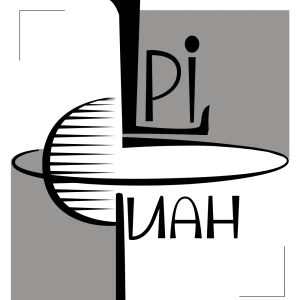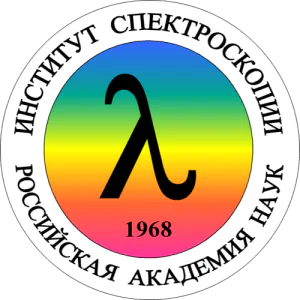Bandgap and Structure Engineering via Cation Exchange: From Binary Ag2S to Ternary AgInS2, Quaternary AgZnInS alloy and AgZnInS/ZnS Core/Shell Fluorescent Nanocrystals for Bioimaging
Jiangluqi Song
1, 2
,
Chao Ma
1, 2
,
Wenzhe Zhang
1, 2
,
Xiaolin Li
1, 2
,
Wenting Zhang
1, 2
,
Rongbo Wu
1, 2
,
Xiangcan Cheng
1, 2
,
Asad Ali
1, 2
,
Xiaoliang Xu
1, 2
1
Key Laboratory of Strongly-coupled Quantum Matter Physics, Chinese Academy of Sciences, Hefei, Anhui 230026, China
|
Publication type: Journal Article
Publication date: 2016-09-07
scimago Q1
wos Q1
SJR: 1.921
CiteScore: 14.5
Impact factor: 8.2
ISSN: 19448244, 19448252
PubMed ID:
27575872
General Materials Science
Abstract
Attention on semiconductor nanocrystals have been largely focused because of their unique optical and electrical properties, which can be applied as light absorber and luminophore. However, the band gap and structure engineering of nanomaterials is not so easy because of their finite size. Here we demonstrate an approach for preparing ternary AgInS2 (AIS), quaternary AgZnInS (AZIS), AgInS2/ZnS and AgZnInS/ZnS nanocompounds based on cation exchange. First, pristine Ag2S quantum dots (QDs) with different sizes were synthesized in one-pot, followed by the partial cation exchange between In(3+) and Ag(+). Changing the initial ratio of In(3+) to Ag(+), reaction time and temperature can control the components of the obtained AIS QDs. Under the optimized conditions, AIS QDs were obtained for the first time with a cation disordered cubic phase and high photoluminescence (PL) quantum yield (QY) up to 32% in aqueous solution, demonstrating the great potential of cation exchange in the synthesis for nanocrystals with excellent optical properties. Sequentially, Zn(2+) ions were incorporated in situ through a second exchange of Zn(2+) to Ag(+)/In(3+), leading to distinct results under different reaction temperature. Addition of Zn(2+) precursor at room temperature produced AIS/ZnS core/shell NCs with successively enhancement of QY, while subsequent heating could obtain AZIS homogeneous alloy QDs with a successively blue-shift of PL emission. This allow us to tune the PL emission of the products from 483 to 675 nm and fabricate the chemically stable QDs core/ZnS shell structure. Based on the above results, a mechanism about the cation exchange for the ternary nanocrystals of different structures was proposed that the balance between cation exchange and diffusion is the key factor of controlling the band gap and structure of the final products. Furthermore, photostability and in vitro experiment demonstrated quite low cytotoxicity and remarkably promising applications in the field of clinical diagnosis.
Found
Nothing found, try to update filter.
Found
Nothing found, try to update filter.
Top-30
Journals
|
1
2
3
4
5
|
|
|
Nano Research
5 publications, 4.59%
|
|
|
Journal of Luminescence
4 publications, 3.67%
|
|
|
ACS applied materials & interfaces
4 publications, 3.67%
|
|
|
Journal of Materials Chemistry B
4 publications, 3.67%
|
|
|
Journal of Materials Chemistry C
4 publications, 3.67%
|
|
|
Optical Materials
3 publications, 2.75%
|
|
|
Nanotechnology
3 publications, 2.75%
|
|
|
Applied Surface Science
3 publications, 2.75%
|
|
|
Journal of Physical Chemistry C
3 publications, 2.75%
|
|
|
Inorganic Chemistry
3 publications, 2.75%
|
|
|
Frontiers in Chemistry
2 publications, 1.83%
|
|
|
ChemistrySelect
2 publications, 1.83%
|
|
|
Advanced Functional Materials
2 publications, 1.83%
|
|
|
Journal of the American Chemical Society
2 publications, 1.83%
|
|
|
ACS Applied Nano Materials
2 publications, 1.83%
|
|
|
RSC Advances
2 publications, 1.83%
|
|
|
Nanoscale
2 publications, 1.83%
|
|
|
Small
2 publications, 1.83%
|
|
|
Journal of Molecular Structure
2 publications, 1.83%
|
|
|
Chemical Engineering Journal
2 publications, 1.83%
|
|
|
ACS Nanoscience Au
2 publications, 1.83%
|
|
|
Journal of Applied Physics
1 publication, 0.92%
|
|
|
Journal of Reinforced Plastics and Composites
1 publication, 0.92%
|
|
|
Nanomaterials
1 publication, 0.92%
|
|
|
International Journal of Molecular Sciences
1 publication, 0.92%
|
|
|
Journal of Materials Research
1 publication, 0.92%
|
|
|
NPG Asia Materials
1 publication, 0.92%
|
|
|
Journal of Colloid and Interface Science
1 publication, 0.92%
|
|
|
Journal of Photochemistry and Photobiology C: Photochemistry Reviews
1 publication, 0.92%
|
|
|
Materials Research Express
1 publication, 0.92%
|
|
|
1
2
3
4
5
|
Publishers
|
5
10
15
20
25
30
35
|
|
|
Elsevier
34 publications, 31.19%
|
|
|
American Chemical Society (ACS)
22 publications, 20.18%
|
|
|
Royal Society of Chemistry (RSC)
14 publications, 12.84%
|
|
|
Springer Nature
11 publications, 10.09%
|
|
|
Wiley
10 publications, 9.17%
|
|
|
MDPI
4 publications, 3.67%
|
|
|
IOP Publishing
4 publications, 3.67%
|
|
|
AIP Publishing
3 publications, 2.75%
|
|
|
Frontiers Media S.A.
2 publications, 1.83%
|
|
|
Hindawi Limited
2 publications, 1.83%
|
|
|
SAGE
1 publication, 0.92%
|
|
|
Taylor & Francis
1 publication, 0.92%
|
|
|
Autonomous Non-profit Organization Editorial Board of the journal Uspekhi Khimii
1 publication, 0.92%
|
|
|
5
10
15
20
25
30
35
|
- We do not take into account publications without a DOI.
- Statistics recalculated weekly.
Are you a researcher?
Create a profile to get free access to personal recommendations for colleagues and new articles.
Metrics
109
Total citations:
109
Citations from 2024:
22
(20.18%)
Cite this
GOST |
RIS |
BibTex |
MLA
Cite this
GOST
Copy
Song J. et al. Bandgap and Structure Engineering via Cation Exchange: From Binary Ag2S to Ternary AgInS2, Quaternary AgZnInS alloy and AgZnInS/ZnS Core/Shell Fluorescent Nanocrystals for Bioimaging // ACS applied materials & interfaces. 2016. Vol. 8. No. 37. pp. 24826-24836.
GOST all authors (up to 50)
Copy
Song J., Ma C., Zhang W., Li X., Zhang W., Wu R., Cheng X., Ali A., Xu X. Bandgap and Structure Engineering via Cation Exchange: From Binary Ag2S to Ternary AgInS2, Quaternary AgZnInS alloy and AgZnInS/ZnS Core/Shell Fluorescent Nanocrystals for Bioimaging // ACS applied materials & interfaces. 2016. Vol. 8. No. 37. pp. 24826-24836.
Cite this
RIS
Copy
TY - JOUR
DO - 10.1021/acsami.6b07768
UR - https://doi.org/10.1021/acsami.6b07768
TI - Bandgap and Structure Engineering via Cation Exchange: From Binary Ag2S to Ternary AgInS2, Quaternary AgZnInS alloy and AgZnInS/ZnS Core/Shell Fluorescent Nanocrystals for Bioimaging
T2 - ACS applied materials & interfaces
AU - Song, Jiangluqi
AU - Ma, Chao
AU - Zhang, Wenzhe
AU - Li, Xiaolin
AU - Zhang, Wenting
AU - Wu, Rongbo
AU - Cheng, Xiangcan
AU - Ali, Asad
AU - Xu, Xiaoliang
PY - 2016
DA - 2016/09/07
PB - American Chemical Society (ACS)
SP - 24826-24836
IS - 37
VL - 8
PMID - 27575872
SN - 1944-8244
SN - 1944-8252
ER -
Cite this
BibTex (up to 50 authors)
Copy
@article{2016_Song,
author = {Jiangluqi Song and Chao Ma and Wenzhe Zhang and Xiaolin Li and Wenting Zhang and Rongbo Wu and Xiangcan Cheng and Asad Ali and Xiaoliang Xu},
title = {Bandgap and Structure Engineering via Cation Exchange: From Binary Ag2S to Ternary AgInS2, Quaternary AgZnInS alloy and AgZnInS/ZnS Core/Shell Fluorescent Nanocrystals for Bioimaging},
journal = {ACS applied materials & interfaces},
year = {2016},
volume = {8},
publisher = {American Chemical Society (ACS)},
month = {sep},
url = {https://doi.org/10.1021/acsami.6b07768},
number = {37},
pages = {24826--24836},
doi = {10.1021/acsami.6b07768}
}
Cite this
MLA
Copy
Song, Jiangluqi, et al. “Bandgap and Structure Engineering via Cation Exchange: From Binary Ag2S to Ternary AgInS2, Quaternary AgZnInS alloy and AgZnInS/ZnS Core/Shell Fluorescent Nanocrystals for Bioimaging.” ACS applied materials & interfaces, vol. 8, no. 37, Sep. 2016, pp. 24826-24836. https://doi.org/10.1021/acsami.6b07768.





















